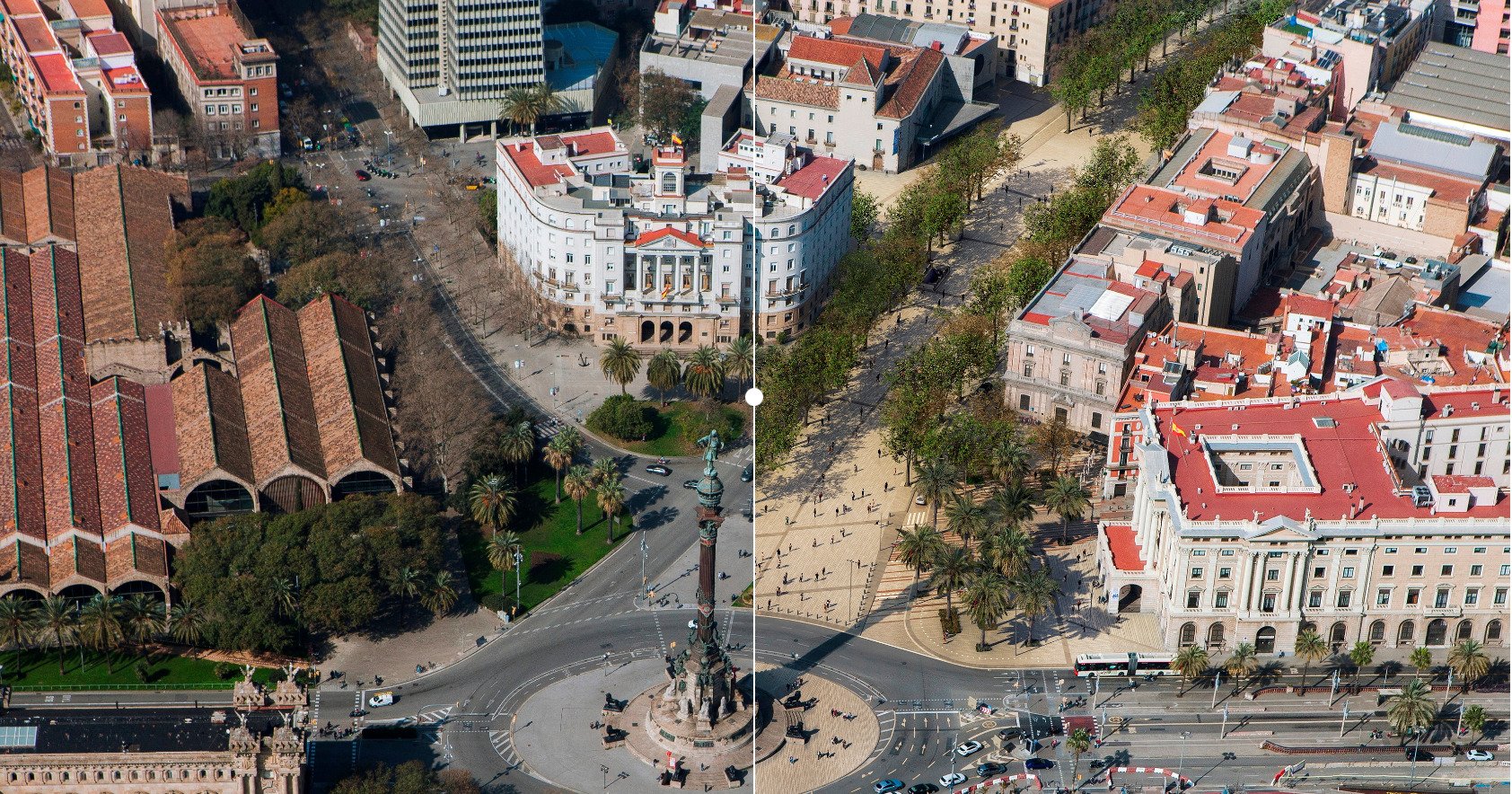Barcelona's town hall has a whole battery of works planned for this final stretch in office, many of which will not be completed before the municipal elections, scheduled for May 2023. One of these is the long-awaited redevelopment of La Rambla, a long-term project announced in March 2021, which is not expected to be fully completed until 2028. At the end of September, once the Mercè 'festa major' festivities are over, work will begin on the first section, the one closest to the sea, between the monument to Columbus, and Carrer del Portal de Santa Madrona.
The City Council will invest 10 million euros, and the first section is expected to be completed in about 18 months, well into 2024. In total, work will be carried out on some 23,000 m² in a reform that includes the modification of the layout of Avinguda de Drassanes to improve the connection with the coast and lengthen La Rambla with a new urban space in front of the sea. A new square with trees will be created to encourage social interaction and renew the meeting point between the promenade, Drassanes and the Columbus monument.
The most significant novelty of the redevelopment will be the paving, as there will be no more asphalt. The new floor will be made out of pieces of different types of natural stone, granite and porphyry, which will cover the entire axis, acting as a unifying element from façade to façade. In addition, there will be around a hundred trees, 21 of which will be new, their pits will be wider, and the subsoil will be improved. Over 100 benches will be installed in order to create spaces for people to sit on, and the lighting will be unified with a single, simpler and more functional design. In addition, safety bollards will be installed at the request of the Local Safety Board. Regarding traffic, the model envisaged for the entire redevelopment will also be applied. There will be a single lane on each side that will admit bicycles and buses, urban distribution of goods, service vehicles and access to car parks, and it will be restricted to neighbourhood traffic, as is already the case today in the uphill direction.
A more civic-minded boulevard
The Columbus-Santa Madrona will be the first of the five areas planned for the transformation of La Rambla. The others will be carried out later, once the first one has been completed, and are: Santa Madrona-Arc del Teatre, Arc del Teatre-Liceu, Liceu-Portaferrissa and Portaferrissa-Canaletes. The total budget for the project is 44.56 million euros. The new Rambla will reduce the space given over to vehicles and give more to pedestrians. The road section will be continuous and regular along the entire length of the promenade, with a single 3.5-metre-wide traffic lane on each side, restricted to local traffic, services, goods and parking. There will be sections with a 2.80 m service curb that will be reversible for the most part, and safety elements such as bollards will be installed at the ends of the boulevard and at all pedestrian crossings.
The reduction in the width of the roads will allow for more space on the side pavements, which will be at least 3 metres wide, to make it easier for people to walk and enjoy the shops and establishments along La Rambla. The central section will also grow slightly on both sides to improve space for pedestrians and the living conditions of trees, enlarging their tree pits. The uniqueness of the new Rambla is evident in three major spaces strategically located along the axis, at three of the most singular crossroads: the Espai Moja-Betlem, the Pla de la Boqueria and the Pla del Teatre. These three large square-type spaces are configured differently, with a single platform, which adapts to the morphology of the space itself, the horizontal and vertical flows, the special relationship with the main cultural facilities along the boulevard and the capacity for interaction it has had over time.

